Indoor cannabis cultivation basics
List of contents
Indoor cannabis cultivation is often seen as something difficult that can only be performed by specialists. Well, nothing could be further from the truth, since growing our favourite cannabis strains indoors is easy if we follow few simple instructions and are a bit constant.
In this post we'll tell you in an easy and simple way how to build an indoor grow room, focusing on three important aspects: ventilation, nutrition/medium and the lighting system. If we keep these three elements under control and choose correctly our strains, indoor cultivation can become something simple and almost mechanical, although if we neglect some of them, both yields and quality can be seriously diminished.
For this post we used a 1,2 x 1,2 metres grow tent, with 2 metres of height. In the market we can find lots of different grow tent models, so finding the one that best fits into our growing space should be easy. In this way, controlling the temperature and humidity of the environment will be easier, besides keeping our plants away from external light sources that could interrupt the night period of our plants, something vital for a good flowering.

Summary for indoor cannabis cultivation
The most important factors when building an indoor cannabis grow room are:
Lighting System
Our plants need light to properly grow and bloom. Most lighting systems are composed of a ballast, a reflector and a bulb. Normally, we use white/blue light for the growth period (with less Watts) and orange spectrum bulbs for flowering (increasing the potency of the system).
Ballasts are necesarry for the correct operation of the lamps, and can be electromagnetic or digital. LEDs, CFLs and fluorescent tubes often have a built-in ballast, while we must purchase a ballast for HPS or HM bulbs.
We can find tens of different reflectors in the market, from the most simple models to the modern air cooled reflectors. Their function is reflecting the light produced by the bulb downwards the plants, so the materials used to manufacture them and their design is very important for optimal light reflection.
Depending on the temperature and humidity level of the grow room (also on the total Watts used), lights are often placed 40-60 cm above the tops of the plants. To be sure, check the temperature and humidity on the top of the plants so you know if you should raise (more cold is needed) or lower (more heat is needed) the bulb. Later we will see which are the best temperature and humidity ranges to grow cannabis.
- Growth: 18 hours of light / 6 hours of darkness per day, white/blue spectrum. Commonly used systems: LEDs, CFLs, Fluorescent tubes.
- Flowering: 12 hours of light / 12 hours of darkness per day, white/blue spectrum (MH) during stretch (first 2-3 weeks into flowering), orange spectrum (HPS) until harvest.
- Autoflowering plants: 20 hours of light / 4 hours of darkness per day. White/blue spectrum during growth, orange spectrum for flowering.
- Light should be off during the heat of the day. Use air cooled reflectors if temperatures are too high.
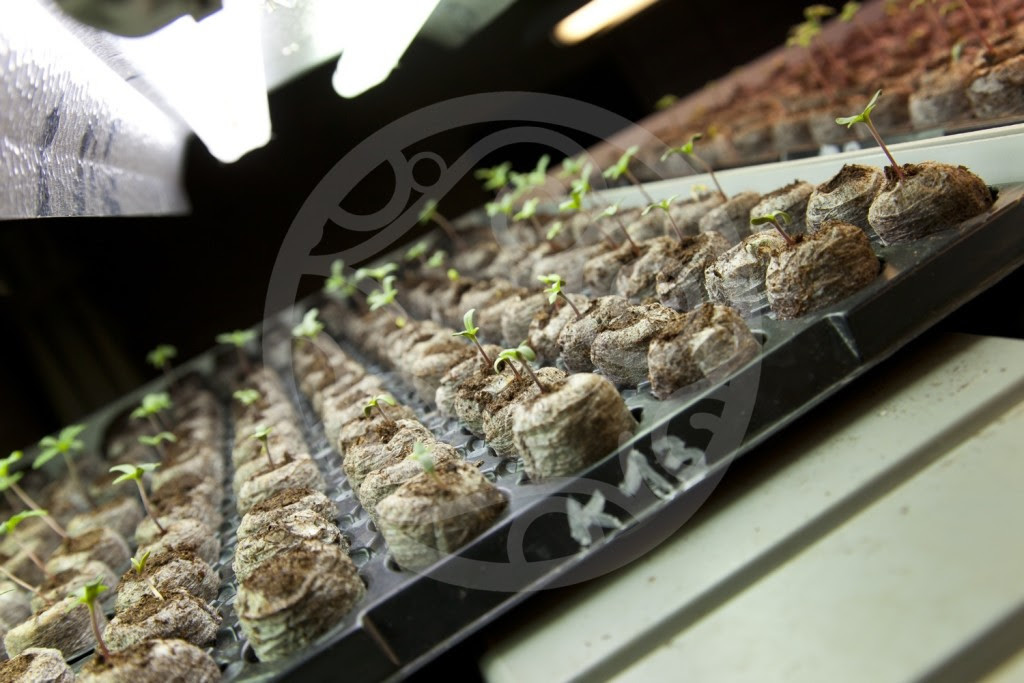
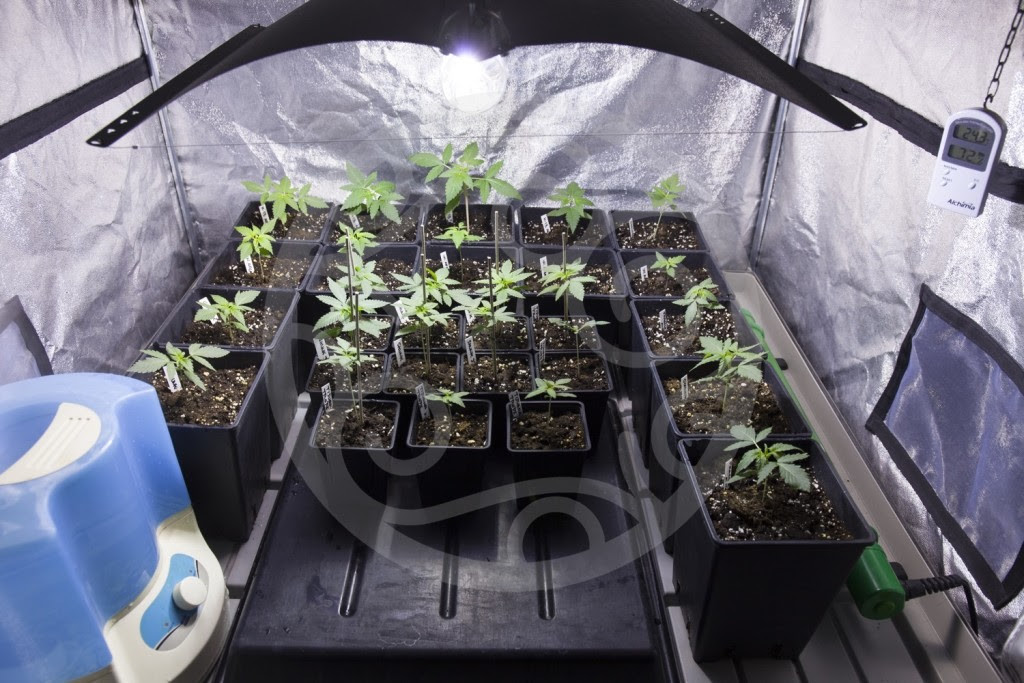
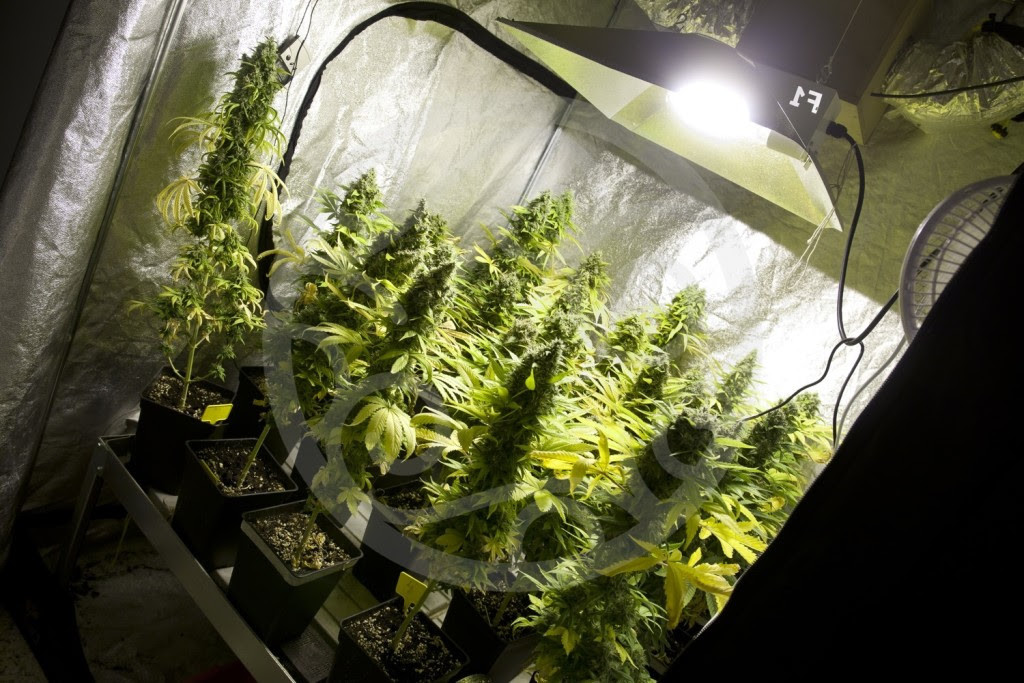
Ventilation
Ventilation is another key aspect in cannabis cultivation, since it allows our plants to breathe, lowers the temperature of the grow room/tent and filters and removes odours from the plants.
Check this post on ventilation of cannabis grow rooms for further details.
- Air extractor: Reduces heat and humidity, helps renewing the air. Can be connected to a carbon filter/tubular ozonizer to filter the air coming out from the growing space, removing unwanted smells.
- Air intractor: It should always be of less capacity (m3/h) than the extractor fan. Introduces fresh air in the grow room.
- Fan: Helps preventing the formation of heat/air pockets, reinforces the structure of plants.
- Normally, the ventilation system operates while the lights are on, and at regular intervals during the night period (you can use a timer to set the desired intervals).
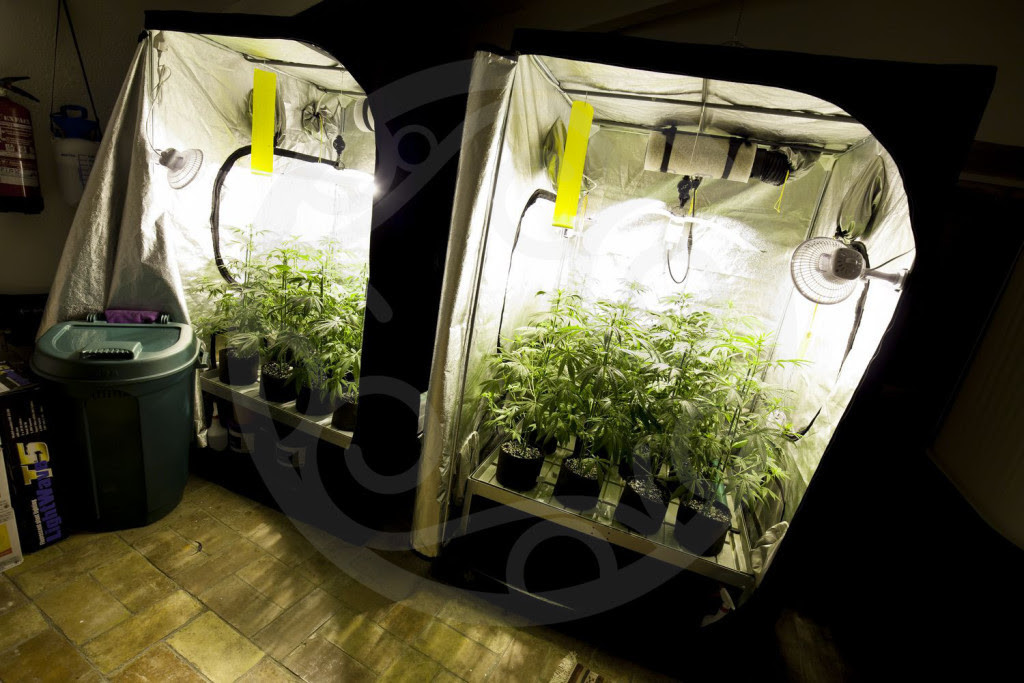
Nutrition
Last but not least, feeding correctly our plants is obviously vital to achieve top grade cannabis buds. Basically, we should choose between organic or hydroponic cultivation. Each technique has its specific nutrients and growing media, available in any Grow Shop.
Organic cultivation:
- Soil for cannabis plants with slightly acid pH.
- Solid or liquid fertilizers.
- Nutrient solution pH: 6-6,8
- Nutrient solution temperature: 20ºC
- Nutrient solution EC: 1-1,6
Here you have a post with the Philosopher Seeds team explaining how to prepare a soil mix for growing cannabis.
Hydroponic cultivation:
- Hydroponic medium (coco coir, clay pebbles, mapito, lava rock, etc) with slightly acid pH.
- Liquid fertilizers
- Nutrient solution pH: 5.5-6,2
- Nutrient solution temperature: 20ºC
- Nutrient solution EC: 1,2-1,8
Needed materials for building an indoor cannabis grow room
These are the basic materials for setting up an indoor cannabis grow:
- Grow tent
- Lighting system (ballast, reflector, bulb)
- Ventilation system (air extractor, air intractor, fan, carbon filter)
- Thermo-hygrometer
- Timers for the lighting system (hours of light/darkness) and the ventilation system
- Organic or hydroponic fertilizers with the corresponding growing media
- Plant pots
- Cannabis seeds
Cannabis and grow lights
Normally, the first thing a grower must consider is the lighting system used in relation to the available growing space. Unless this space is really small (in this case we'd use LEDs or CFLs), most growers choose the lamps with best power consumption/lumens relation, either MH (metal halide) or HPS (high pressure sodium) lamps.
The power and spectrum of the bulbs are also determined by the cycle of the plant: growth or flowering. During growth, cannabis plants do not require lots of lumens, but they do need a minimum of 18 daily hours of light. For this stage, white/blue spectrum bulbs are often used, and different types of light can be found: LEDs, CFLs, fluorescent tubes and MH lamps.
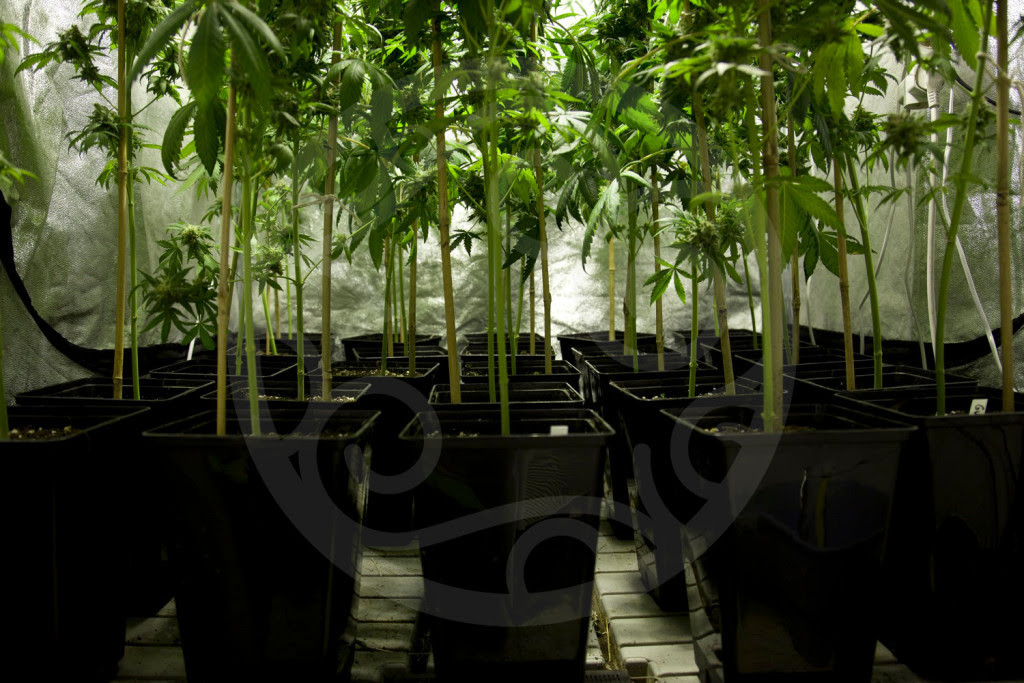
During bloom, and if we want to get best results, we should use orange spectrum bulbs and far more lumens than during the growth stage. The most commonly used lamps for this phase are High Pressure Sodium (HPS), with a photoperiod of 12 daily hours of light and 12 hours of complete darkness.
As we can see, when we grow marijuana indoors we decide whether or not to switch our plants to the flowering cycle by controlling the photoperiod inside our growing space. Logically, autoflowering plants - like White Yoda or Cheesy Auto - do not follow this rule, and flower regardless the photoperiod; the most used combination is 20 hours of light and 4 hours of darkness per day.
To keep temperatures as stable as possible, and even if we have a good ventilation system, we should always turn our light off during the heat of the day. If necessary, we can use air cooled reflectors to lower the temperatures 4-6ºC inside the grow room.
For our grow tent we used - always looking for maximum yields - a 400W MH bulb for the growth stage (18/6) and a 600W HPS for flowering (12/12).
Ventilation and indoor cannabis cultivation
Ventilation allows us to remove excess heat and moisture in the environment. Thus, and since our plants need to breathe, we need a constant renewal of the air inside the growing space, especially if we can also use our extractor fan to filter and remove the intense smell from our plants.
Using an extractor fan and an intractor (always of less capacity then the extractor) is often enough to create a nice environment for our plants, with reasonable temperatures and humidity levels and proper air renewal. Using a fan inside the grow room helps preventing the formation of air pockets. If we connect a carbon filter to our extractor fan - or a tubular ozonizer - we'll also remove all odours from the air coming out from the grow tent.
Normally, plants develop better at 20ºC with the lights off and 26-28ºC with the lights on. Humidity should be between 60-70% during growth and around 50% during bloom. Most growers use thermo-hygrometers with Max/Min to monitor these values and timers to program the ventilation system according to the needs. There are also many different climate control units that automatically turn on/off our ventilation system.
As we can imagine, we should purchase the ventilation system according to the available growing space and the lighting system used, since part of its task is removing the heat produced by the lamps besides completely renewing the air in few minutes.
For our example, with a 1,2 x 1,2 meters area and a 400W HM for growth and a 600W HPS for bloom, a 125mm RVK/PK type extractor will be enough, with a 100mm intractor and a 15cm oscillating fan.
Nutrients and substrates for cannabis plants
We have the adequate lighting system for our grow room and have purchased the ventilation system according to it. We now have to decide what type of cultivation we want to perform. Although we can find tens of systems and techniques, we'll focused on the easiest method, organic cultivation. In our honest opinion, organics is better in regard with quality of the final product.
We basically have two options here: using a light soil, with enough nutrients for 2-3 weeks, or using "All mix" type soils, with enough nutrients for a couple of months. If we choose the first option, we'll surely have to add liquid or solid fertilizers to our substrate during the flowering stage.
Remember to water your plants when the substrate is still slightly wet and not completely dry, and use the correct fertilizers according to the cycle of the plant, growth or bloom. We recommend you to read this post on how to water cannabis plants in soil.
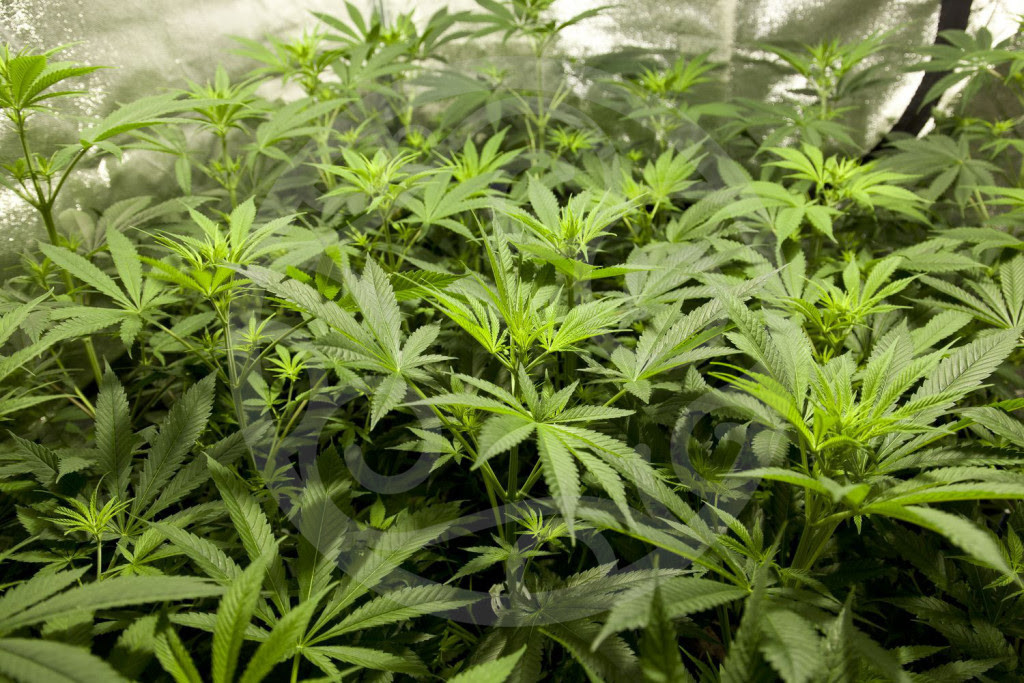
If we have to use extra nutrients, we can find solid fertilizers, which are mixed with the growing media and work great for guerrilla grows and autoflowering plants, or liquid fertilizers, used in each watering at moderate doses especially with relatively long flowering strains like Jack el Frutero or SuperJuani. The nutrient solution temperature must be around 20ºC, with a pH near 6,5. If we use liquid nutrients and we have a EC meter, we should use 1-1,2 Ec during growth and 1,4-1,6 during bloom.
Cannabis cultivation
Once all this is clear and we have built our grow room, we can fill the pots with our soil mix, water it a bit and sow our seeds. Under a 18/6 photoperiod, our plants will grow during 2-4 weeks, depending on varieties: 2-3 weeks for Sativas, 3-4 weeks for Indicas like Black Bomb or Tropimango.
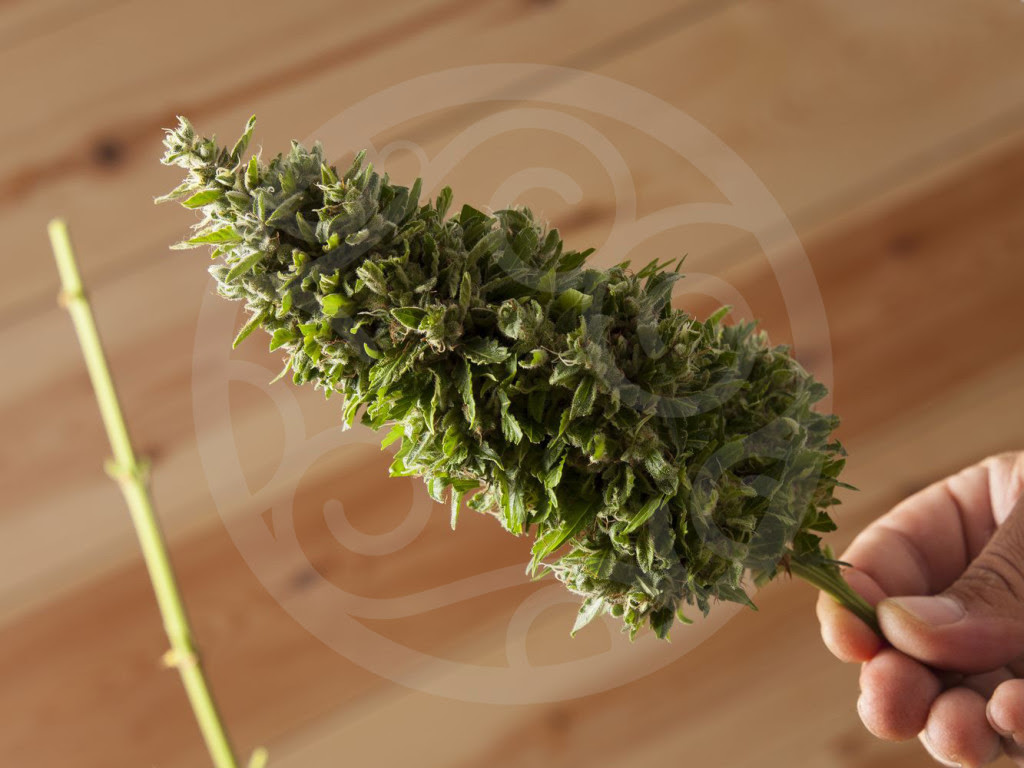
When they've reached the adequate height, we can switch to flowering (12/12 photoperiod). If we have enough space, transplanting into larger pots is recommended. Once the plants start developing flowers, change to flowering nutrients.
A couple of weeks before the harvest, stop adding nutrients and water your plants with plain water (flushing stage).
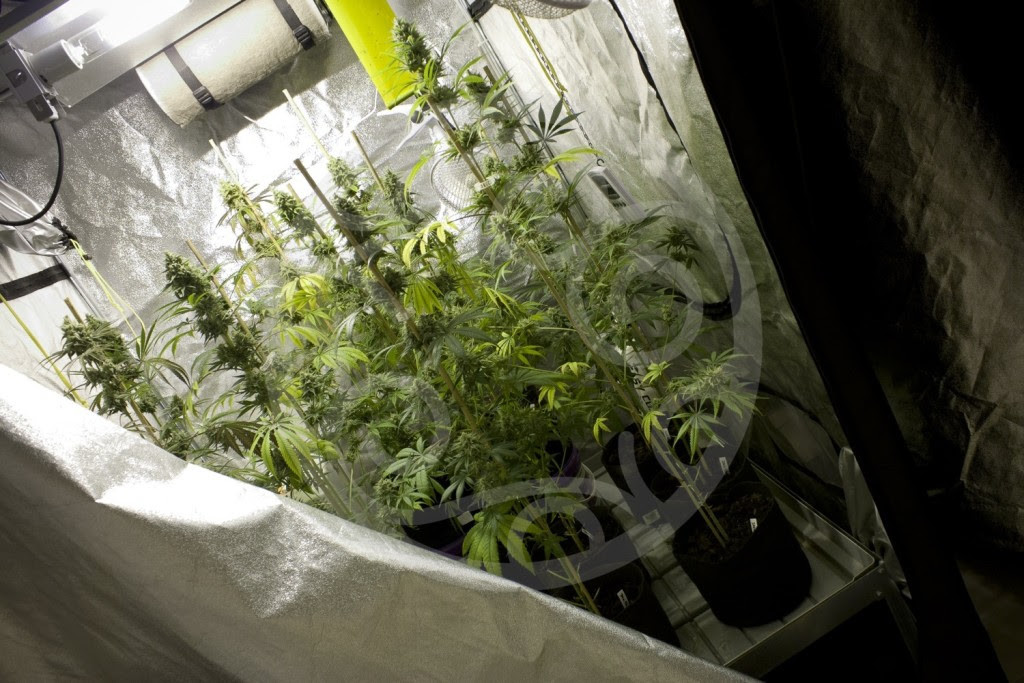
We hope these tips helped you to start your indoor cannabis grow. You'll see the effort is worth it, there's nothing like homegrown cannabis!
Best vibes!






